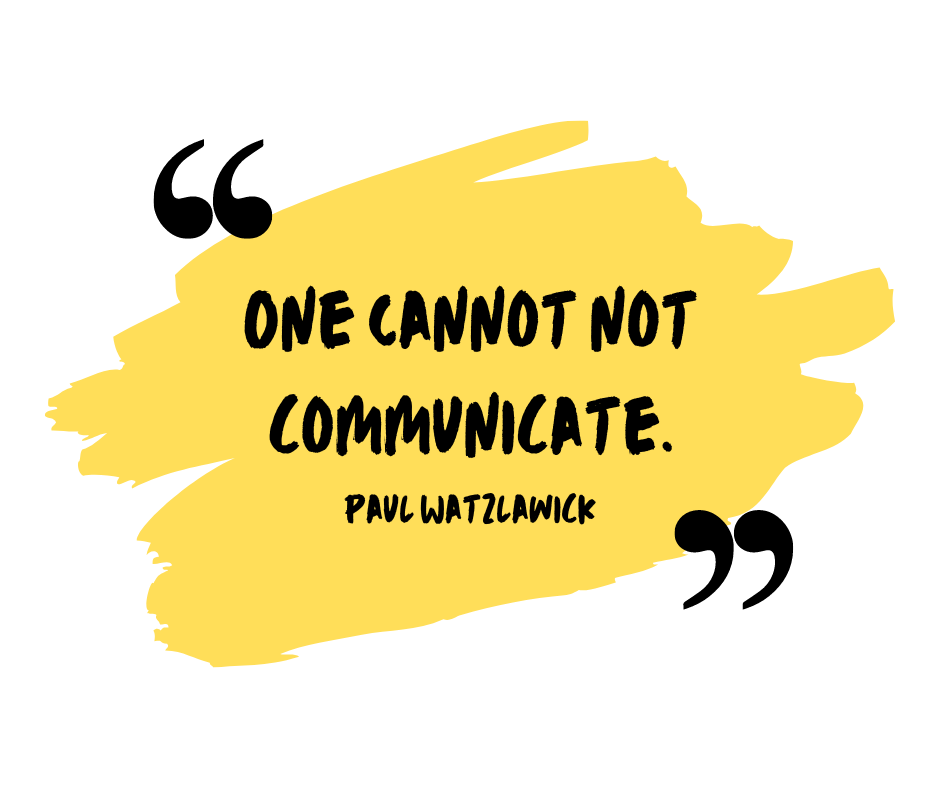Have you heard the saying, “One cannot not communicate” before?
It’s from Paul Watzlawick, a psychologist and communications theorist, and basically means that no matter what, you’re communicating something to someone.
Everything you say or do (or don’t say or do) is communicating a message.
Even when you don’t think you are.
Maybe even especially when you don’t mean to.
Think about any recent social interactions you’ve had. The theory makes a lot of sense.
And that idea applies to your nonprofit organization, too.
Everything your nonprofit emails, posts, prints, or does is communicating something to your donors. Everything your nonprofit doesn’t email, post, print, or do communicates something to your donors.
Yes, even when you say nothing or do nothing, it’s sending a message.
And it’s not just donors that your organization is communicating with.
It’s also potential donors.
Very few (if any) people will become donors without having received a message from you. Maybe it’s something you intentionally send out like an acquisition mailing… Or maybe it’s that you don’t know them yet, but they know you. They heard about your organization from a friend and looked at your website or Facebook page.
What they read and saw communicated something to them.
You’re probably already managing what you intentionally communicate. You craft your appeals, newsletters, and emails to have a specific voice and message. You make sure everything donors see from you is unique and couldn’t have come from anyone else. You build your social media posts to engage with your followers.
But what about the unintentional communication?
Here are 2 examples of messages from nonprofit organizations that they probably didn’t know they were sending.
1. Jenny hears about KangaRescue that helps rescue and rehome wild kangaroos, something she cares a lot about. Jenny gives a gift and attends an event to support KangaRescue. Afterwards, Jenny reaches out to find out how she can get more involved. And. . . crickets. No response.
Jenny emails again a few days later, “Hey, I really love what you guys are doing and I’d love to help out.”
Still, no reply.
Now, there’s probably a legitimate reason why there wasn’t a reply. It’s unlikely that someone at KangaRescue saw that email and said, “Well, we definitely don’t want more volunteers! Delete!”
But no matter the reason, KangaRescue has told Jenny that they don’t really need her. “We’re very happy to take your money, but actual involvement? No thanks.”
The result? Jenny engages with Care for Kangas, who will let her lean in. KangaRescue puzzles over their lapsed donor numbers.
2. After giving a gift, Kyle receives an initial tax receipt. It’s a form letter, all the usual basics and IRS legalese. But that’s all he receives for months.
No thank you letter.
No acknowledgement.
Then, three months later he receives an appeal asking for another gift.
The result? Kyle didn’t feel like his gift was appreciated or noticed. So that appeal goes straight into his special file cabinet*.
There are a thousand different ways you can communicate with donors. And no matter how hard you try to control the message, it’s not always going to be the message you intend.
But remember, your nonprofit org is always communicating.
Questions? Email us at: howdy@oneicity.com
*The trash can in his kitchen

